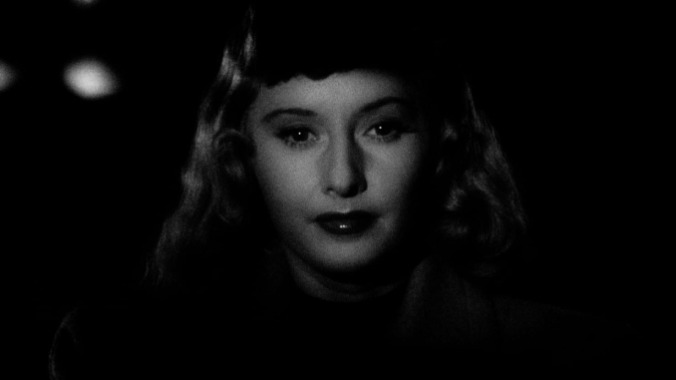Double Indemnity at 80: Billy Wilder and Barbara Stanwyck’s Caustic, Enduring Allure

In a post-New Hollywood landscape, many have come to look at Hays Code-era films as gaudy and brusque, as entirely too heavy on narration and telling. Naturalism is adulated; melodrama is out. Double Indemnity, 80 years later, remains one of many films that proves that the studio fare of yesteryear is worth celebrating. This is in no small part due to Barbara Stanwyck’s Phyllis Dietrichson—her pitch-perfect performance adorned by platinum blonde bangs, overlined red lips and a velvety, deep voice made her a paragon of the femme fatale and a cornerstone of the trope for years to come. But Double Indemnity of course also owes much to its writer/director Billy Wilder, a maestro of caustic humor and writerly, narratively intricate film structures whose scripts compliment his conservative, theatrical directorial style—a style laden with static movement amid its chiaroscuro lighting.
Double Indemnity centers on insurance salesman Walter Neff (Fred MacMurray), who ostensibly gets roped into a murder scheme by the provocative Phyllis, intent on killing her husband. Drawn to her in seconds, it is Walter who comes up with a scheme to kill the husband, win Phyllis and live off a fraudulent accidental death claim.
Contemporaneous reviews of Double Indemnity, such as in The New York Times, offered a sensationalist reading of the film. “Miss Stanwyck gives a good surface performance of a destructively lurid female, but Mr. MacMurray is a bit too ingenuous as the gent who falls precipitously under her spell,” wrote Bosley Crowther. “And the ease of his fall is also questionable. One looks at the lady’s ankles and he’s cooked.”
-

-

-

-

-

-

-

-

-

-

-

-

-

-

-

-

-

-

-

-

-

-

-

-

-

-

-

-

-

-

-

-

-

-

-

-

-

-

-

-








































